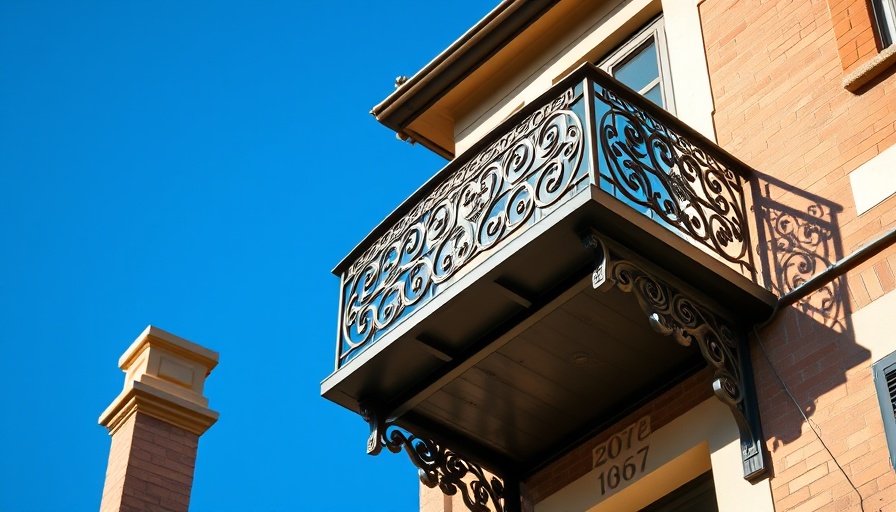
Unveiling the Mystery of Widow’s Walks
In picturesque coastal towns, where the land meets the sea, you may encounter homes adorned with unique rooftop platforms known as widow’s walks. Positioned elegantly atop historic houses, these structures are not just decorative; they carry tales of maritime culture and architecture. Often misconceived as tragic symbols of waiting wives, widow’s walks present a rich narrative that goes beyond folklore.
A Historical Perspective on Widow's Walks
Originating in the 19th century, widow’s walks, also referred to as “roof walks” or “captain’s walks,” emerged as a prominent feature in coastal architecture, particularly in New England. These railed platforms allow homeowners breathtaking views while serving pragmatic purposes such as overseeing ship movements. It’s a reflection not just of home design but of the societal status associated with maritime trade.
Their architectural inspiration lies in Italianate cupolas, appearing on numerous stately homes in regions like Cape Cod and Nantucket. As these homes speak of luxury and leisure, the widow’s walk quickly turned into a symbol of both wealth and function.
Beyond the Legend: The Practicality of Widow's Walks
Despite their romanticized portrayal, widow’s walks were more than merely a perch for waiting wives. During their inception, sailors often brought home their fishing catches, and these platforms allowed homeowners to monitor their spouses’ return. Moreover, in the era of wood-burning stoves, these roofs provided vital access to chimneys, allowing easier methods to manage fires, as homeowners kept sandbags ready to douse any flare-ups.
Where to Find These Architectural Gems
Primarily, widow’s walks can be spotted along the Eastern Seaboard. Their popularity flourished in historic towns like Nantucket and Newport and extended into the South, where port cities like Charleston and Savannah adapted elements of this design. While less ubiquitous, the Midwest and Great Lakes also showcase the style, demonstrating the widespread influence of seafaring life on American architecture.
Modern Trends: Reviving the Widow's Walk
As the appreciation for historical architectural features grows, widow’s walks are experiencing a renaissance. Contemporary homebuilders, keen to merge tradition with modern luxury, are incorporating innovative designs. These include sleek lines and sophisticated materials like glass railings, which enhance the view while maintaining a residential aesthetic.
Challenges in Restoration and Addition
However, owning or adding a widow's walk is not without challenges. While they enhance curb appeal and outdoor space, restoration can be complex. Homeowners need to carefully consider safety, structural integrity, and local regulations pertaining to historical districts before undertaking restoration projects. It's imperative to consult with experts in architectural restoration to maintain the charm without compromising modern safety.
Why Knowing About Widow's Walks Matters
Understanding the significance of widow’s walks adds depth to our appreciation of coastal architecture. As reminders of a bygone era, they evoke a sense of nostalgia while encouraging discussions about our maritime heritage. Whether you’re a homeowner considering a renovation or a history enthusiast uncovering the intricacies of architectural evolution, widow’s walks provide valuable insight into how our homes reflect history and culture.
Join the Movement
If you’re inspired by the rich architectural history of widow’s walks, consider advocating for their preservation in your local community or exploring the restoration of your own coastal home. Engaging in this movement not only honors the past but also enriches the culture of our coastal communities.
 Add Row
Add Row  Add
Add 



Write A Comment